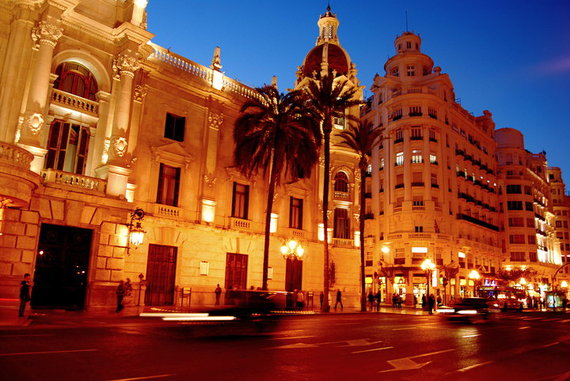If good things really do come in threes, then Valencia -- Spain's third-largest city after Madrid and Barcelona -- perfectly completes the trifecta. Nestled comfortably on the Mediterranean western coast, Valencia is the perfect mix of classic and contemporary that has come to define some of Europe's most attractive, cosmopolitan cities. So alluring is it, in fact, that Ernest Hemingway saw it a fitting locale to begin The Sun Also Rises, and later chose it as a base when covering the Spanish Civil War.
It's easy to see why Papa was so in love with Valencia. There are more than 160 acres designated as the city's historic center, and wandering around them feels some kind of wonderful. Where else can you find one of the oldest and largest markets in Europe, a cathedral said to house the Holy Grail and a group of buildings dating back to 1482-1533 that were originally used for trading silk, and are now UNESCO World Heritage sites credited for being "masterpieces of late Gothic architecture," and for illustrating "the power and wealth of a major Mediterranean mercantile city in the 15th and 16th centuries"? Oh, and don't forget about that whole living history element, where a court dating back to Moorish times mediates in matters relating to water and irrigation every Thursday at noon outside the Apostles' Gate of Valencia's Cathedral. Put that on your calendar.
In the present day, Valencia smoothly retains its prowess. There's the huge City of Arts and Sciences, which spans 350,000 square meters, and is comprised of an opera and music palace, an interactive science museum resembling the skeleton of a whale, and L'Oceanogràfic, the largest aquarium in Europe. You can also bike -- or party -- along the city's seaside promenade, throw tomatoes and participate in the world's largest food fight, or attend a riotous week of city fires, explosions and parades. And let's not forget about the food.
To call Valencia a culinary capital feels almost like a slight. Go seaside for garlic and eels, try Agua de Valencia with fresh Valencian orange juice at Cafe Infanta, and remember that the city is the undisputed capital and originator of one of the country's informal national dishes -- paella. Though Hemingway haunt, La Pepica, is more popular, one of the city's best versions of a true paella Valenciana with chicken, rabbit and beans can be found at El Bodegó de la Sarieta, with all ingredients sourced locally. Once you've found yourself impossibly full, relax at a horchateria with some pastries and horchata, a historic drink made of water, sugar and tigernut. One of my favorite spots to do this is opposite the Iglesia de Santa Catalina in the picturesque corner of Plaza de la Reina, where you can sit and drink in the history -- literally and figuratively.
Valencia remains one of Katherine's favorite cities -- can't you tell? She recommends a ratio of three servings of paella to every historic site.
